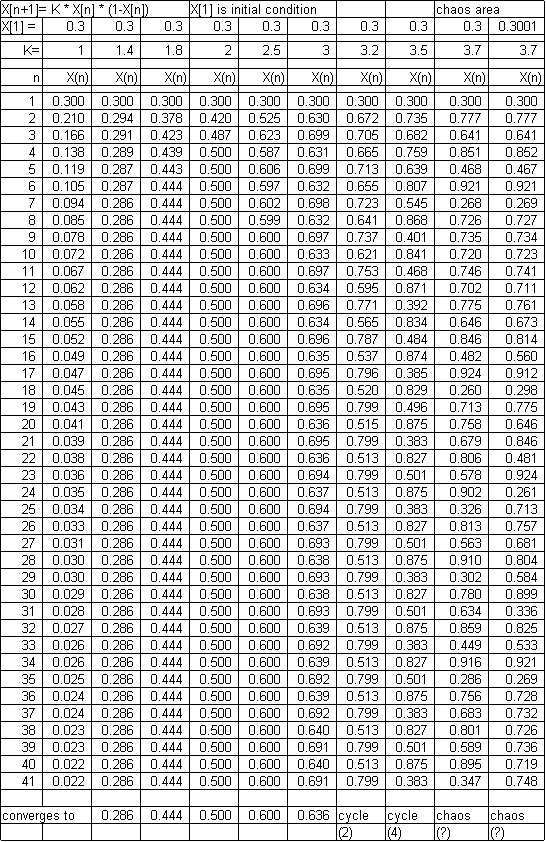|
|
|
Below is a copy of a
spreadsheet that illustrates chaotic behavior. The math is described on page 35
of REASON AND REALITY by John Polkinghorne (1991) and describes how species
population sizes vary in successive years. Next year’s population (X[n+1]} depends
on:
(1) how many of the species
there are to breed this year (X[n])
(2) on the attenuating
effect of limited resources this year (1-X[n]).
X is a scaled population size
and K is the coupling effect determining how strong these two factors are in determining
actual population size. Note the
results through a 41 year cycle of various values of K. X[1] may be set to any
value more than 0 and less than 1. If K=2 the value quickly settles down to 0.5
after a few years. For K=3.2 there is a two cycle oscillation. By K=3.58 no
stable pattern is ever established. Chaos.
So what? A simple equation
can produce unpredictable behavior. Try, for example, with K = 3.7, both X[1} =
0.3 and X[1] = 0.3001. At first the predicted values are similar – then wide
divergence. This is true for even values of K which differ from one another by
only a few millionths of a percent. We can never know initial conditions
accurately enough to predict far into the future. The application is evident
when applied to weather forecasting, of course.
